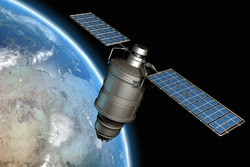Satellites protect European biodiversity
The Natura 2000 network was established in 1992 to link the EU's protected natural areas, both on land and in the sea. To comply with Natura 2000's conservation legislation, scientists monitor European biodiversity using satellites — specifically, the EU's Copernicus programme (formerly the Global Monitoring for Environment and Security (GMES)). With EU funding, the 'Multi-scale service for monitoring Natura 2000 habitats of European Community interest' (MS.MONINA) project developed GMES-based services that can collect relevant information at different scales across the Natura 2000 network and beyond. This fulfilled Natura 2000 needs at three geographical scales: for individual sites, Member States and the EU as a whole. MS.MONINA started by recording Europe's mapping capabilities. This categorisation helped the MS.MONINA site to offer services and products, such as maps and indicators of landscape configuration, vegetation, habitats and conservation efforts. The project also spent some time considering user requirements via interviews, surveys and user validation testing. This was performed at every level at which MS.MONINA operates — site, state and European. In light of the diversity of data sources and formats, as well as user requirements, the project rolled out a sophisticated digital interface known as Nature-SDIplus. In addition, the project made all of its data and methods available through a public web portal and database. The information and services provided by MS.MONINA will be invaluable in the fight to conserve European biodiversity. With these new tools, the goals of Natura 2000 are well within reach.
Keywords
Satellites, biodiversity, biodiversity monitoring, satellite data infrastructure, Natura 2000, conservation, conservation legislation, Copernicus, Global Monitoring for Environment and Security



